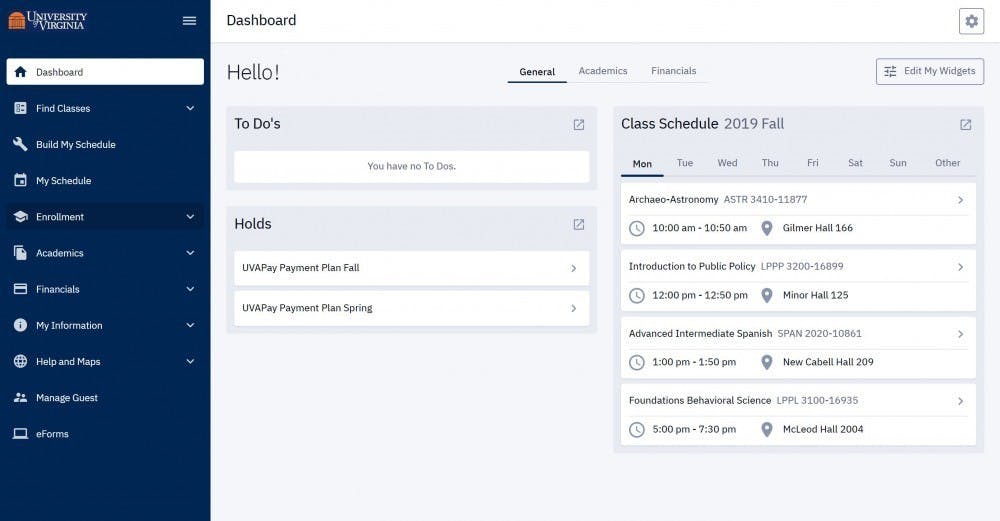Course selection is vital for a student’s success — choosing the right classes can make or break a semester. Every course has to be carefully selected to ensure it is serving some greater purpose in the student’s academic career, whether that be fulfilling a general education requirement, counting towards one’s major or allowing one to experience an alternative field of study that may help them determine their future path. Thus, there is extreme pressure on students toward the end of the semester — not only do they have to complete final projects and exams, but they also have to be forward-thinking enough to be able to plan their course schedule for the semester ahead.
Course selection isn’t easy — students are assigned enrollment times and dates on which they must enroll. Upperclassmen are given the earlier slots, and underclassmen the later ones, meaning that oftentimes, by the time first and second years are able to enroll in courses, many are full or have long waitlists. This is logical — it ensures that upperclassmen, who are closer to graduating, are able to get the courses necessary to complete their degrees and graduate on time. But even for upperclassmen, there is no guarantee they will be able to enroll in the courses they want or need. Students must plan which courses they wish to take prior to their enrollment time, but by the time they’re permitted to actually sign up for classes, they may have to change their entire plan. This process of trial and error to find courses to take is difficult enough, but the challenges don’t end there. Another major struggle exists in that even if students have everything planned, they are restricted by the amount of credits they are permitted to sign up for at that initial date — students are only permitted to sign up for a maximum of 15 credits.
At first glance, this may not seem like a problem — in the most basic sense, 15 credits means taking five standard 3-credit courses. But in reality, this is extraordinarily prohibitive. While the standard class is 3 credits, any class that has a lab component or simply requires a greater workload counts for 4 credits. 4-credit courses are common among all majors, so this restriction means many students can only sign up for a maximum of four courses, or 12 to 13 credits, at their initial course enrollment time if they plan on taking a four-credit course. This student will have to wait for open enrollment to be able to sign up for a full schedule, at which point they face the possibility that courses they may want or need to take will already be filled up. With many students working toward completing multiple majors and minors, this is severely limiting. Trying to balance several different fields of study along with general education requirements means needing flexibility in course scheduling that a 15 credit limit does not provide.
Even simply increasing the initial credit limit to 16 credits would alleviate some of the issues caused by this unrealistic limit. 16 credits is a fairly standard amount of credits — it would mean a student is taking four traditional, 3 credit courses, and one 4 credit class. By increasing the credit limit right off the bat, students would be able to sign up for a still entirely reasonable schedule immediately rather than having to wait until open enrollment starts a few weeks later with the risk that the courses they need will already be filled.
With over 18,000 undergraduate students enrolled at the University, it’s understandable that administration needs to create some restrictions to ensure all students can sign up for courses. Credit limits are therefore theoretically put into place to ensure all students can sign up for courses and that all courses are not filled before other students have the opportunity to enroll. However, in practice, this isn’t the case. While the intention is positive, the impact is even more unnecessary stress and strain on students. Increasing the credit limit by one credit likely wouldn’t prohibit students with later enrollment times from signing up for full schedules. Since a 16 credit course load still only translates to five courses — the standard number of courses for a student to take — a student taking four 3 credit classes and one four credit classes shouldn’t exclude other students from signing up for full course loads. There are hundreds of courses offered each semester, and plenty of spaces for students. Increasing the credit limit by just one credit would alleviate stress on students and make the course selection process more seamless for all.
Hailey Robbins is an Opinion Writer for The Cavalier Daily. She can be reached at opinion@cavalierdaily.com.
The opinions expressed in this column are not necessarily those of The Cavalier Daily. Columns represent the views of the authors alone.







